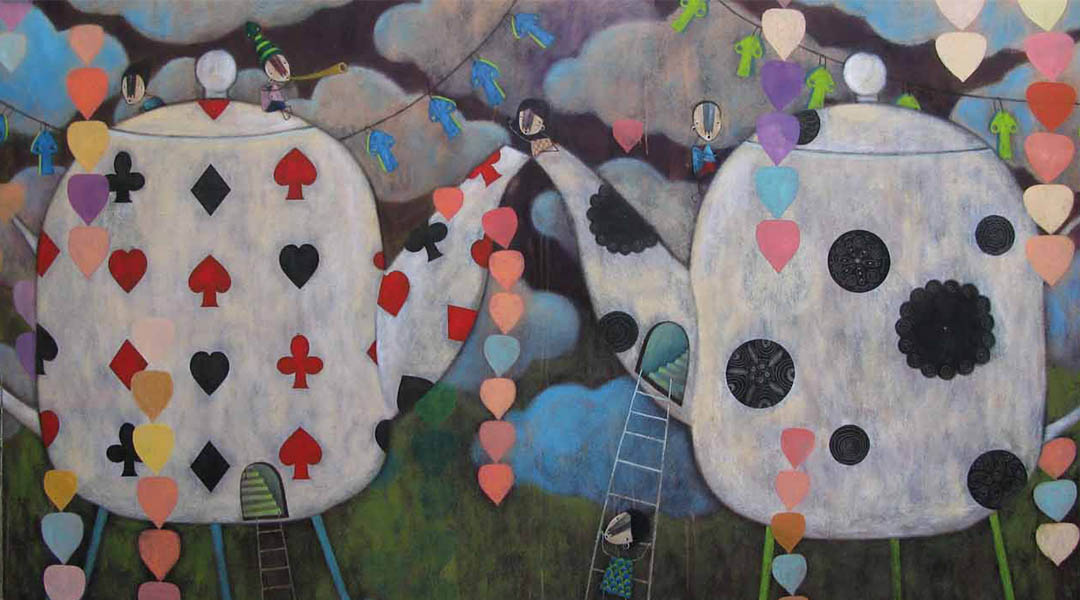
Refreshing the Classic: The Art of Farley del Rosario
The artistic style of Farley del Rosario traces back to creative history. Since the beginning of the Millennium, a young artist movement focusing on simplified figures drawn child-like in a naïf expressionist manner has been underway. Focusing on themes like romance, memory, and children’s stories, this artform revels in the process wherein art becomes “illustrational,” that is, that paintings serve to illustrate stories or values that are often derived from literature. Although the modern-day book publishing industry has made this concept an everyday popular occurrence, its origins are more hallowed. During the Medieval period, when books were prohibitively expensive and the majority of the population was illiterate, biblical narratives and episodes of the New Testament were painted into huge frescoes, built up into mosaics, or carved into stone and wood, and decorated churches and cathedrals so as to serve as visual lessons and cues for parishioners to learn their catechism from the walls and ceilings. When book publishing began in the West in the 1500s, woodcut prints and etchings served as additional art forms that were used to complement the printed literature and allowed audiences to treasure books as works of art themselves. The modern publishing industry of illustrated children’s book, comic books, graphic novels, and coloring books thus follow a deep and rich history of illustration art stretching back at least one thousand five hundred years.
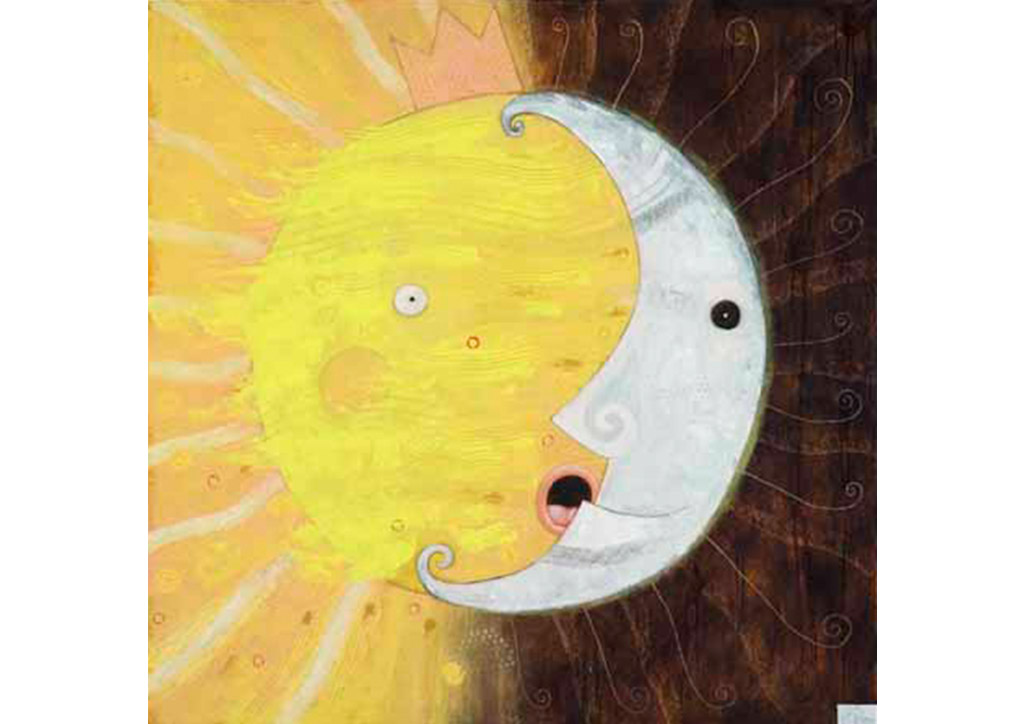
Farley single-mindedly pursued the concept of illustration art as a painting practice to the national and international level of attention, and may thus be ironically referred to as “a painter of illustration art.” This is not to denigrate his work as inferior to, say, more “serious art” like abstraction or expressionism, but rather realize the potential of painting to be as socially relevant to its audiences as it once was before alienation and the concept of the “tortured genius/ anti-social avant-garde artist” became a habituated norm among modern artists.
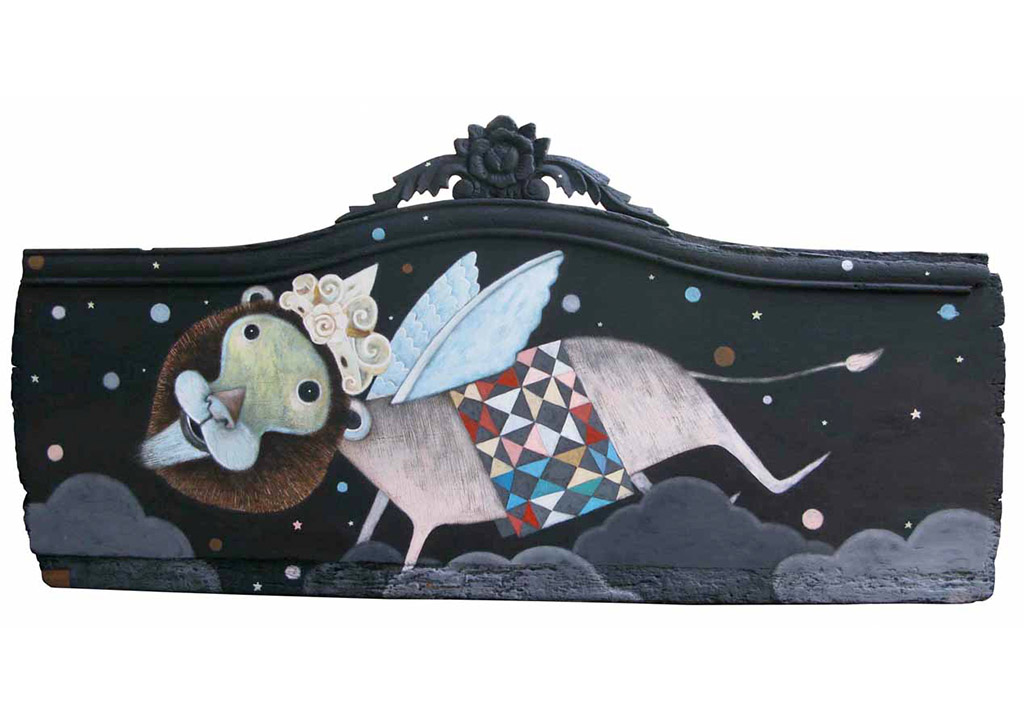
Farley’s biographical origins also speak of a gentler, more nurturing environment where drawing was encouraged, and being an artist for a childhood ambition was deemed natural. Born and raised in Zambales, sixty kilometers west of Manila facing the South China Sea, Farley’s father is an artist, while his mother is an optometrist. The clear air and clean provincial surroundings helped Farley develop a visual imagination that was suffused with the strong Zambal sunlight and the azure seas. Studying Fine Arts at Manila’s Philippine Women’s University (PWU), Farley was already noticed as an art student due to his taking a finalist position at the Shell National Student Art Competition, and representing PWU at the 15th PLDT Visual Art Competition.
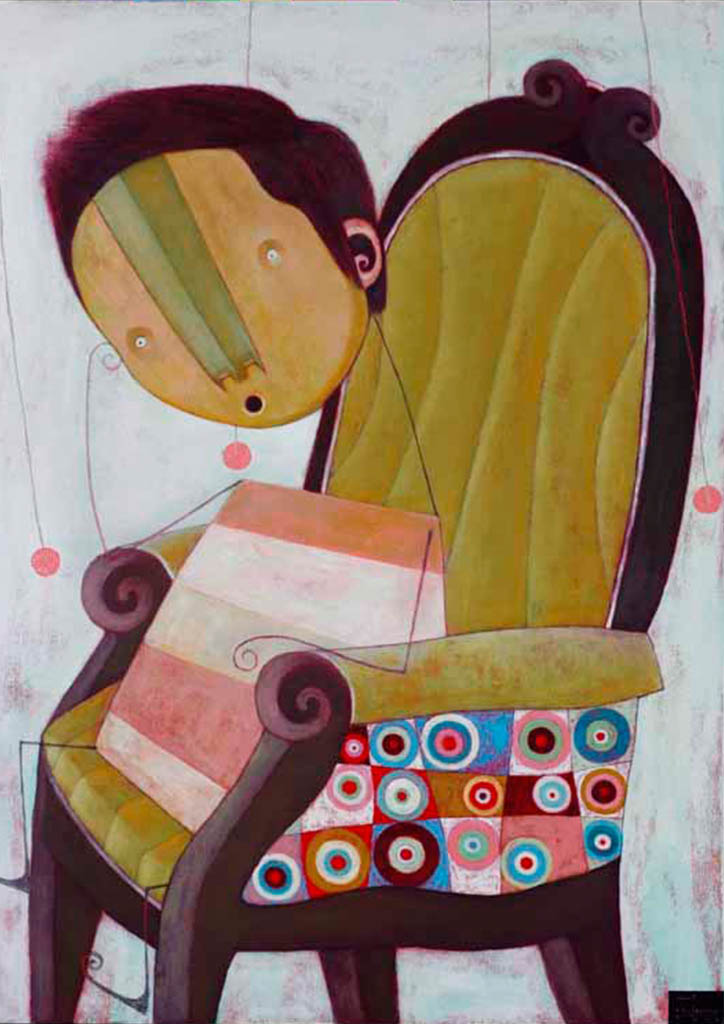
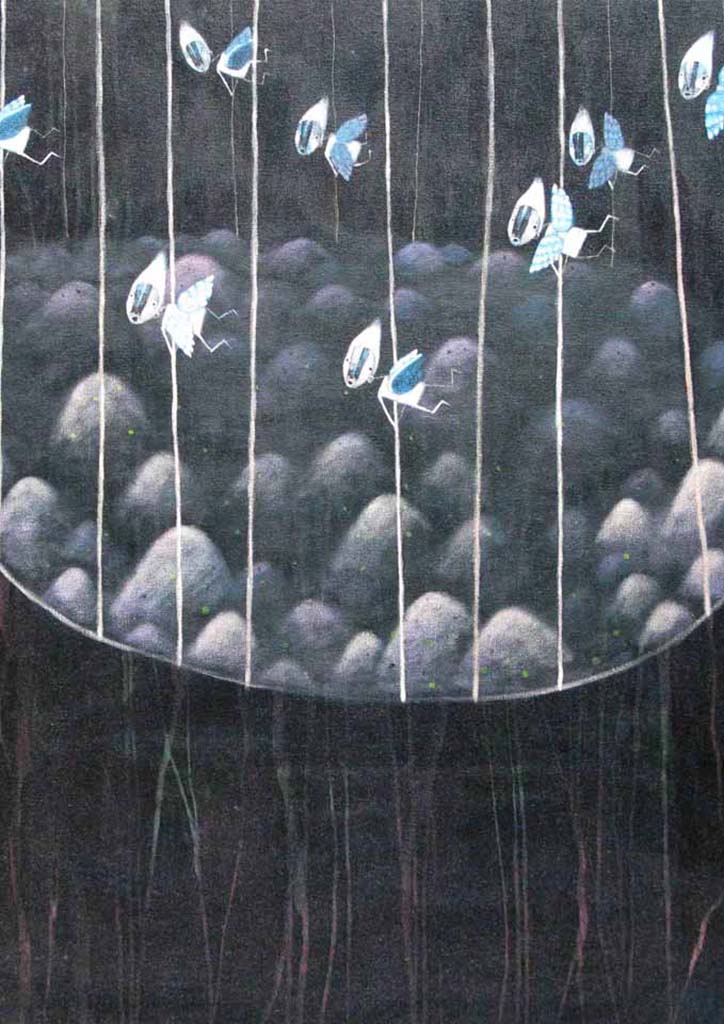
Farley’s subsequent career as an artist and illustrator was greatly strengthened when he won the commission to illustrate the cover for The Philippines Yearbook 2006. He has also been able to illustrate the Annual Fookien Times Yearbook in tandem with the essays of A.R. Samson, Federico D. Pascual, Jr., and National Artist F. Sionil Jose. Farley’s list of publishing successes also includes his illustrations for Agay Llanera’s “Sol” under CANVAS (2006), which illustrate the poignant story between the child violinist Amorsolo, and his love for the female sun Sol.
From book illustration, it was a simple matter for Farley to translate his “pop illustrational” skill back to “high art” painting, a process that has occurred regularly among young artists for the past thirty years. Farley has done in several exhibitions since 2005, his first solo entitled “Truly, Madly, Deeply” in 2007 and his latest, “Analog Obscura”. In these exhibitions, Farley demonstrates the power that illustration art could infuse into painting, especially when his audiences recognize themselves not only for the themes that his paintings dwell on but also in the culture and lifestyle that ties up the generational identity of Farley with the rest of the young Filipinos that he relates to.
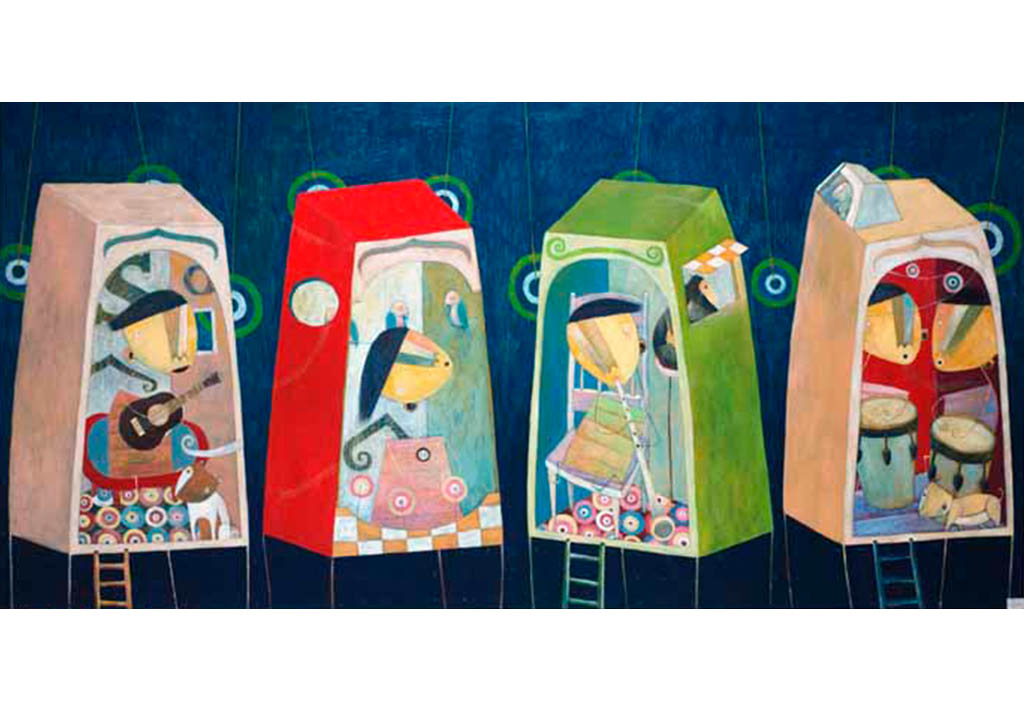
Farley del Rosario’s other paintings, such as those that extol the carefree life of youths as they play in fantasy landscapes (Musical Carousel, Kettle and Hide), celebrate birthdays (High Five), and work out a sweat in individualized musical houses (Friendly Neighbourhood) seem to speak both about the loss of innocence that most of us feel when we are thrust at “too young an age” into the world of grownup business. One other thing must also be remembered, though. Farley’s talent at looking back on our contemporary lives as punctuated by our own foibles and heartaches also reminds us that the age of innocence need not be equated with the age of ignorance. In this regard, Farley del Rosario’s unique use of a clear naïf illustration style to bolster one’s credentials in a particularly adult art world where competition is keen, and innovation, from whatever source or discipline it may originate, is welcome when the strains of conceptual exhaustion by a community becomes an obstacle to future aesthetic growth.
READ MORE: The Enlightened Maestro: Martino Abellana, the Amorsolo of the South


